DTC Marketing: Proven Strategies & Examples For Dropshippers
Want to build a loyal customer base and get closer to your customers? Have you thought about DTC Marketing?
This marketing strategy helps you take full command of the entire customer journey. Plus, you can watch your conversion and retention goals effortlessly fall into place.
But there’s more! The direct-to-consumer (DTC) approach not only trims down costs but also reveals invaluable insights that fuel smart adjustments in your sales and marketing efforts.
And here’s the secret sauce: you can keep a close eye on it all using a cutting-edge subscription reporting platform designed for the savvy sales and marketing pro.
Now, imagine this – by embracing the perfect blend of DTC marketing tactics you can seamlessly fine-tune your strategy and increase your dropshipping business profitability. So, let’s get you there!


Table of Contents
What Is DTC Marketing?
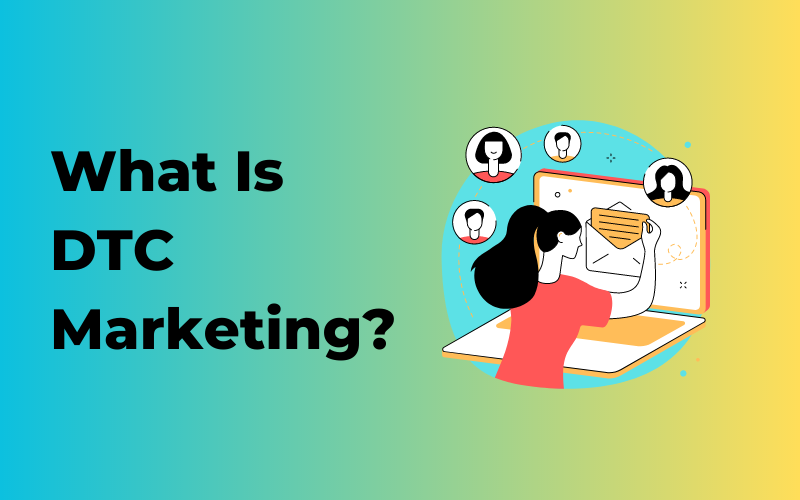
DTC marketing is a strategic approach where brands bypass intermediaries and forge direct connections with their customers through personal or online interactions.
Thus, instead of relying on retail businesses to carry your marketing torch, you seize the reins and orchestrate your own destiny.
Plus, imagine a world where you, as a brand, have the power to directly engage with your customers and prospects. So, no middlemen take off your profits in exchange for exposure and product distribution.
Therefore, by eliminating the unmanageable presence of intermediaries, DTC businesses gain the freedom to target, market, sell, and distribute their offerings directly to their audience.
The result? Stronger relationships, enhanced customer experiences, and a slew of enticing benefits like diverse product ranges and more competitive prices.
But the true allure of DTC marketing lies in the ability to take full control of the consumer’s journey.
👉 Learn How To Make Dropshipping Ads To 10x Your Sales.
Want to learn through example?
One notable company that has embraced DTC marketing is Warby Parker. Instead of relying on traditional eyewear retailers, they disrupted the industry by selling their stylish glasses directly to consumers. So, they sell their products through their online platforms and brick-and-mortar stores.
By bypassing the middleman, they offer customers a curated selection of affordable eyewear options. Plus, they maintain full control of their brand experience.
On the other hand, consider Coca-Cola, a company that has primarily relied on traditional B2C marketing strategies. While they distribute their products through various retail channels, they don’t engage in direct selling to consumers.
Instead, they focus on mass-market advertising campaigns and partnerships with retailers to promote their iconic beverages.
👉 Discover the GoHighLevel Review: The Secret Weapon for Marketing Success.
👉 Learn about How Does Instacart Make Money – Ultimate Review.
What’s The Difference Between DTC And B2C Marketing?
While both B2C and DTC marketing involve reaching and engaging consumers, the strategies and dynamics they use to set them apart.
👉 Learn about B2C vs D2C: What’s The Difference & Which One Is For Beginners.
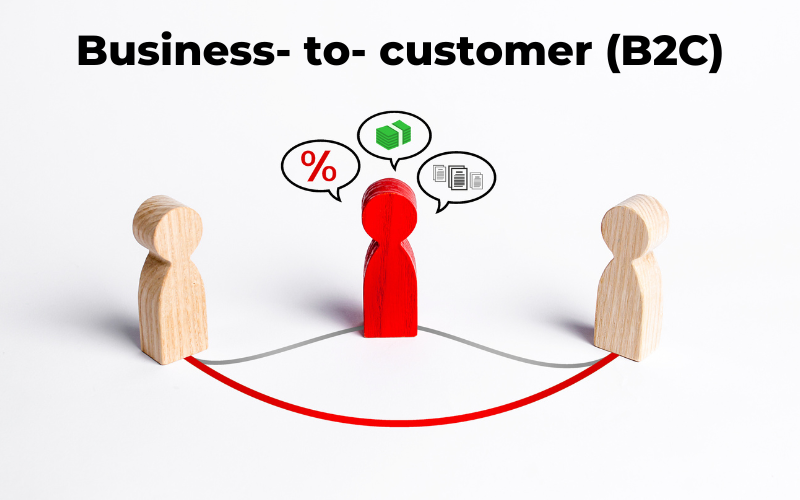
B2C dropshipping businesses mainly sell their products through online or physical retail vendors. Thus, these vendors act as the middlemen, helping the brand’s offerings reach the end consumers.
What’s more, retailers play a significant role in marketing and driving sales, taking on a big part of the marketing efforts for the brand.
Therefore, this allows B2C companies to focus less on attracting customers to their own stores or websites and more on using the retail channel for exposure and distribution.
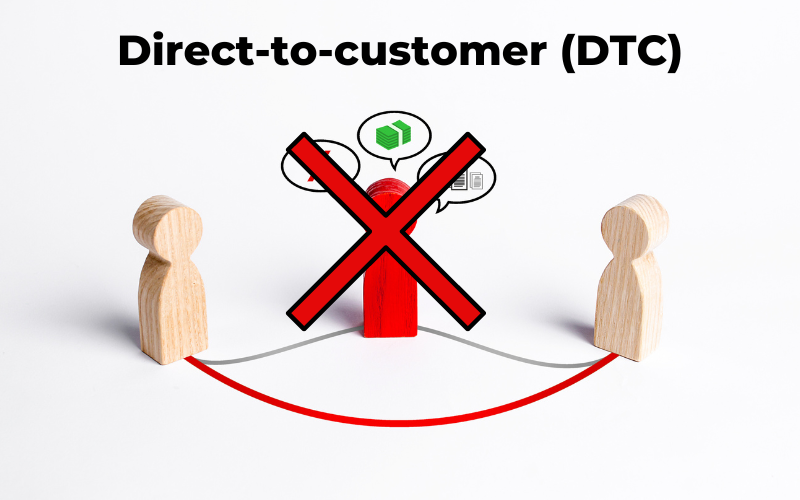
On the other hand, DTC Marketing takes a different approach. These dropshipping companies don’t rely on intermediaries.
In fact, they directly market, sell, and distribute their products or services to consumers. By cutting out the middleman, DTC brands have full control over the entire customer journey, from creating awareness to making the final purchase.
Therefore, this independence gives them the freedom to create unique brand experiences, build direct relationships with customers, and personalize interactions at every step.
👉 Check out the 14 Best eCommerce Merchandising Techniques for 2024.
Top 10 DTC Marketing Strategies For Dropshipping Stores
🔸 Build A Brand Identity
Branded dropshipping is important because it creates trust and builds relationships with customers.
For example, let’s say you need to buy skincare products for your acne problem. Which brand would you choose, CeraVe products or a product from a random seller from AliExpress? The branded product, of course!
Thus, building a brand identity is essential in creating a connection with customers. So, when a customer like dropshipping branded products, they are more likely to suggest them to others, thereby increasing the brand’s reach and recognition.
Moreover, branding encourages customer loyalty, which is crucial in building a sustainable business. Studies have shown that a significant percentage of customers buy from a particular company just because they are loyal to that brand.
In addition, branding is creating a powerful & well-recognized name for a certain business.
So, when a customer thinks about you, they either think of you based on your name, logo, product, etc. This is all done through the trust & loyalty built over time with your customers through your services. And, building a brand is essential for DTC Marketing.
👉 Learn everything about Branded Dropshipping: Best Practices for Building a Successful Brand.
🔸 Use Social Media Marketing
In today’s interconnected world, where nearly half of the global population is active on social media, you can tap into diverse segments of your target audience.
Social media marketing is perfect for dropshippers that thrive on establishing direct connections with their buyers. Firstly, you can get people to follow your page. Next, by sharing unique and valuable content, you can captivate the existing or even a larger audience on social media. Plus, you can keep them engaged with your dropshipping brand.
Moreover, a robust presence on social media enables you to leverage user-generated content from your followers.
Therefore, a compelling approach could involve encouraging users to share pictures of themselves using your products alongside a brand-related hashtag. For example, we will type “#zara” into an Instagram search.
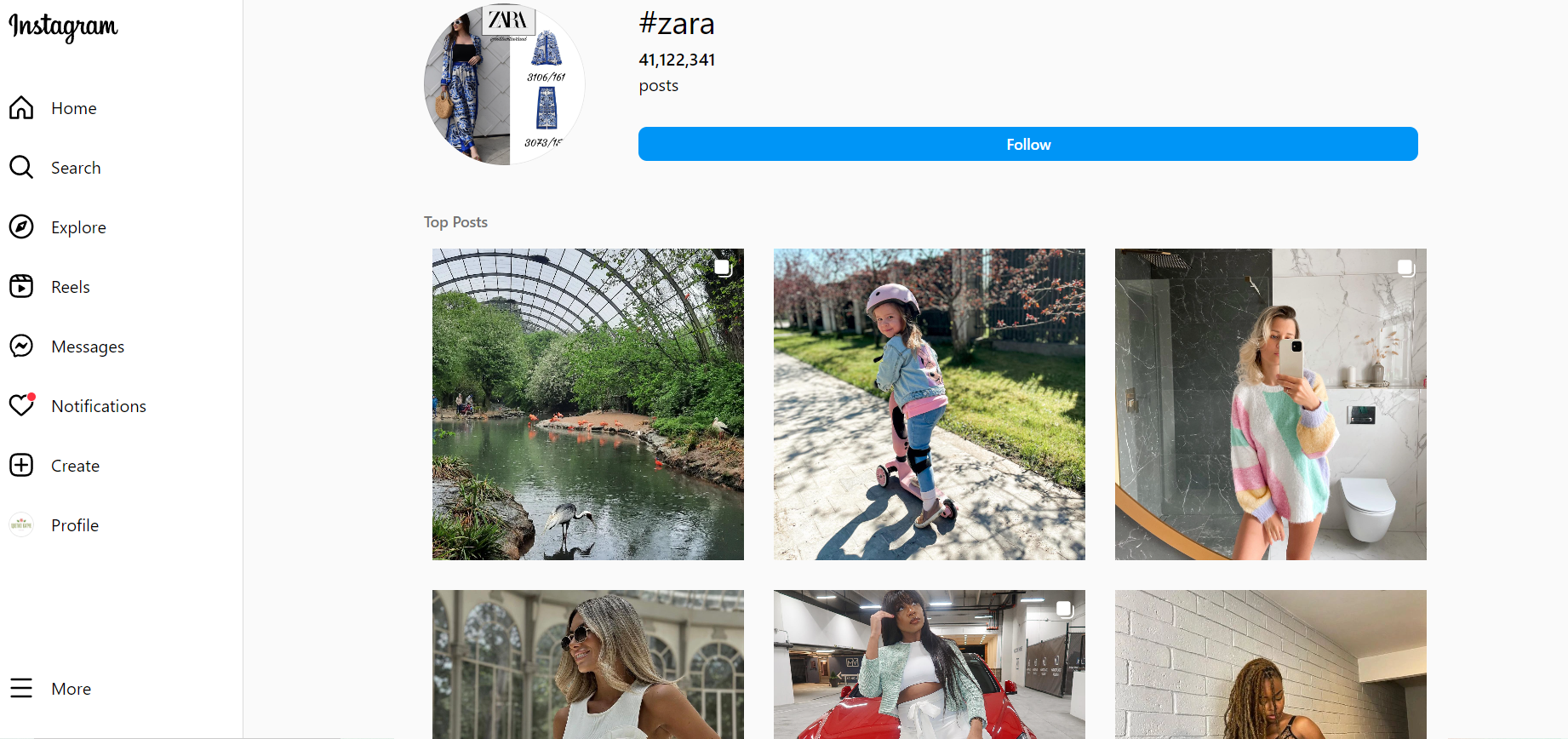
As you can see, we got more than 41M results from user-generated content. Quite impressive Zara! Well done with DTC marketing! 🙌
This user-generated content serves as a powerful tool to show authentic experiences and further enhance your brand’s visibility and resonance.
👉 Check out Testimonial Advertising: 11 Proven Examples To Sell More.
🔸 Use Influencer Marketing
DTC businesses can effectively harness the power of influencer marketing, leveraging the established reputation of these influential individuals.
Therefore, by enlisting the support of influencers, your products or services can be enthusiastically promoted through captivating photos, videos, reels, and blog posts shared across their social media channels.
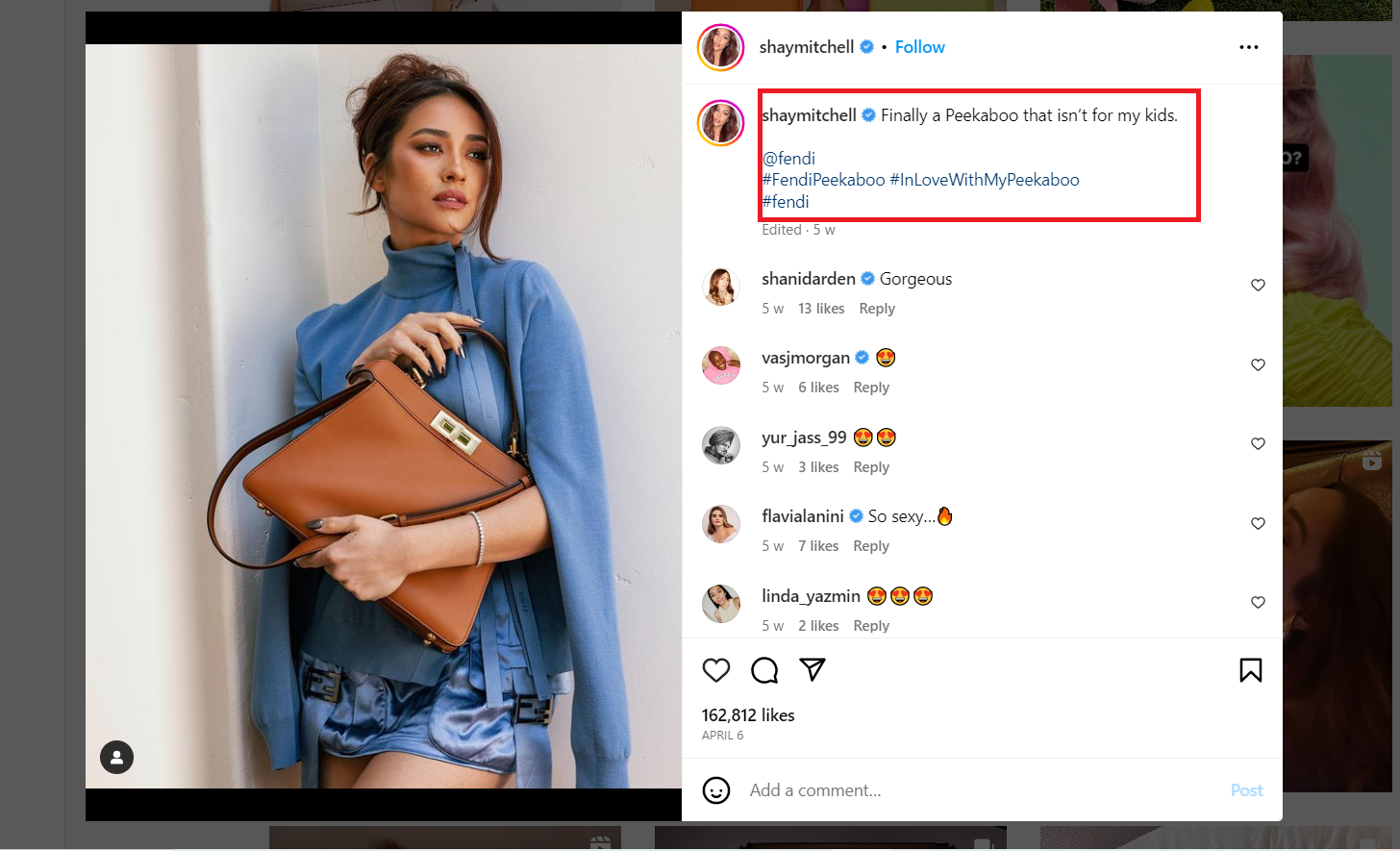
The noteworthy aspect is that when customers choose to follow an influencer, they place greater trust in their opinions compared to paid ads. Also, there’s a genuine tendency to imitate these influencers and be inspired by them.
Hence, collaborating with an influencer who genuinely resonates with your brand or manifests its values is a compelling strategy to expand your audience and bolster your brand equity.
Nevertheless, as a DTC marketing dropshipper, the key lies in finding influencers who align seamlessly with your brand image and can leave a positive impression on your audience.
Thus, it’s crucial to ensure that their audience demographic aligns with your target consumers in terms of basic factors such as age, gender, and location.
👉 Read about How To Make Money On Youtube Without Making Videos [2024].
🔸 Personalize The Buying Experience
Making the shopping experience personal is a clever strategy that can boost your dropshipping business and strengthen connections with customers.
Thus, by customizing the shopping journey to fit each customer’s preferences, you can create a truly special and unforgettable experience.
However, personalization is more than just using customers’ names or giving general recommendations. In fact, it goes deeper than that.
It means understanding what they need, want, and dream of, and designing an experience that deeply connects with them.
Therefore, a good way to achieve personalization is by using data and technology to learn about your customers.
By studying their past purchases, browsing habits, and demographic information, you can gain valuable insights that help you create personalized recommendations and offers.
For example, based on these data, you can offer them a “you may also like” section.
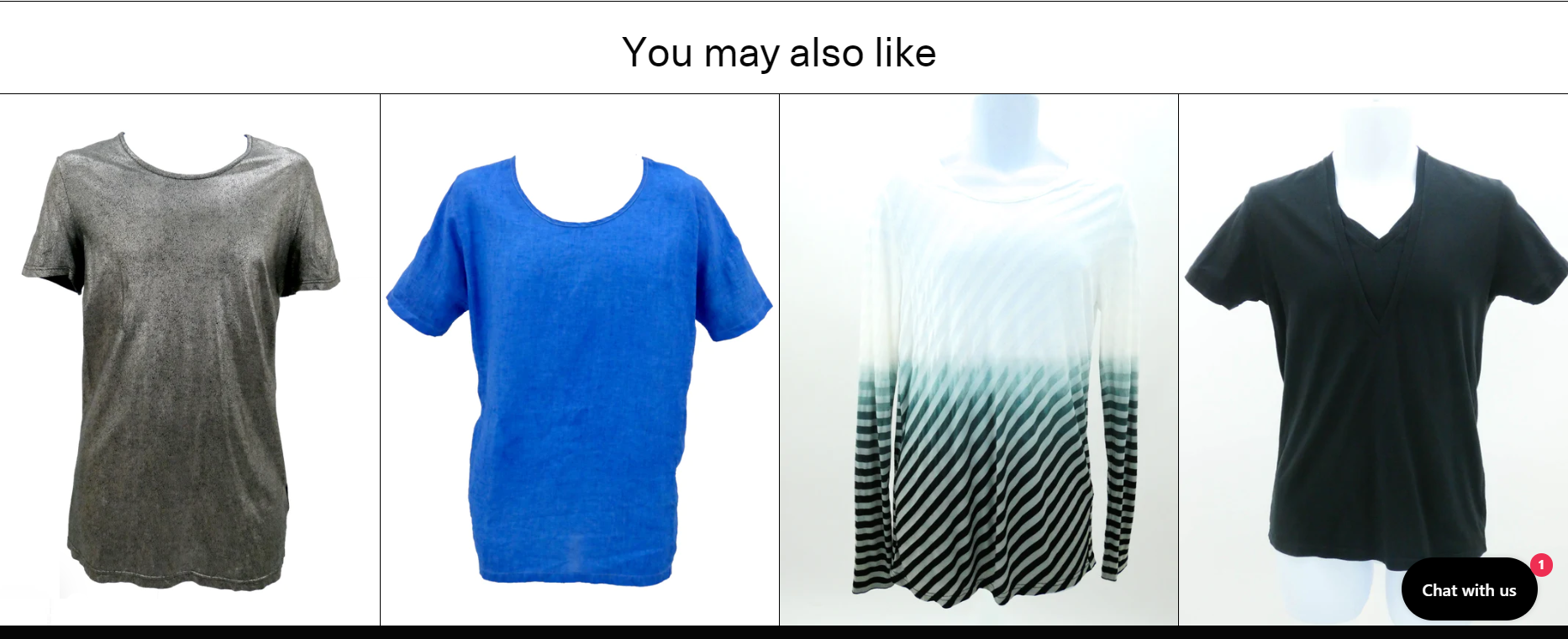
Another important aspect is customization. It lets you suggest products that match customers’ specific interests and preferences. This can be done through interactive quizzes, personalized product packages, or customized product options.
By catering to their unique tastes, you show that you genuinely care about their satisfaction.
Also, this DTC Marketing strategy involves thoughtful communication and engagement throughout the customer journey. Plus, this is exactly what you need as a DTC business. So, think about it!
🔸 Use Email Marketing
You are a direct-to-consumer dropshipper, right? Well, what’s a more direct way to communicate with your customers rather than email?
Having access to a customer’s email address gives you a direct way to connect with them and gather detailed information about how they interact with your communication.
Plus, this valuable data can then be incorporated into your marketing performance analysis system to enhance future campaigns, regardless of the channels your customers use.
We know, gaining an email list can be a daunting task, and it takes time. But, once you have it, it is a rare jewel.
What’s more, automated emails take personalization to another level. In the past, personalization in emails would typically involve using the customer’s first name in the subject line or body.
💡 Tip: Get inspiration from the 8 Order Confirmation Email Examples & Templates For Ecommerce.
However, with automation, emails are sent only after a shopper completes a specific action, making them unique to that individual at that precise moment.
For example, on behalf of Zara’s DTC marketing strategy, have you ever ordered from Zara? Well, once you place an order you instantly get an email that your order will be processed.

Or, if you ask for a product and they don’t have it in stock, they will immediately inform you when it is in stock.

Well, these timely emails, triggered by the shopper’s actions, are highly effective in capturing their attention and engagement.
🔸 Make An Interesting Quiz
Let’s take Dollar Shave Club as a DTC marketing example. They use the quiz to transform potential customers into real ones, or, loyal ones.
So, as you go through their quiz questions you can see that they tend to collect all necessary data for customers, so they can offer or deliver products just in time.
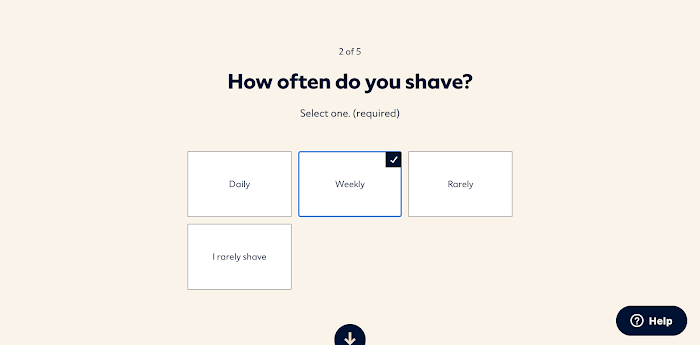
Armed with this knowledge, you can strategically send a timely email, prompting them to refill their supplies. Even if your business doesn’t offer subscriptions, adopting this intelligent tactic can yield positive results.
🔸 Create A Responsive Website
The first interaction they get from your dropshipping business is your website. So, delivering a responsive website is the key. And, if you employ DTC marketing, this is your first direct contact with your potential customers.
Firstly, consider using as many as possible call-to-action buttons (ex. Shop Now, Add to Cart). You must provoke customers to take action.
Plus, these buttons calling for action need to be visible to users. So, make sure you use eye-catching designs, colors, or typography on them. More importantly, keep an eye on their placement.
Furthermore, making your website mobile responsive is a MUST. Most of the customers use mobile devices for shopping. Also, don’t forget about having quick loading times. This gives you a plus for building customer trust.
👉 Check out the 13 Most Successful Shopify Dropshipping Store Examples.
🔸 Analyze Customers’ Feedback
Always pay attention to reviews and comments customers leave.
Customer feedback offers a direct window into the thoughts, needs, and experiences of your target audience. Plus, by carefully studying their feedback, you gain a better understanding of their needs, pain points, and expectations.
This knowledge empowers you to refine your products, services, and overall customer experience to better align with their desires.
One key aspect of analyzing customer feedback is identifying recurring patterns and trends. By identifying common themes in their comments, suggestions, and complaints, you can pinpoint areas of improvement or areas where you excel.
Additionally, when you actively listen to your customer’s feedback and take action based on their suggestions, you demonstrate that their opinions matter and that you genuinely care about their satisfaction.
This fosters trust, loyalty, and advocacy, as customers appreciate being heard and acknowledged.
🔸 Offer Custom Offers & Products
More about making your customers feel important? How about giving them options to customize their own products, or make offers?
Also, you have various tools nowadays where you can let customers design the product they want. Next, you simply deliver their wishes.
🔸 Create A Loyalty Program
Boosting your dropshipping sales and growing a loyal customer base can be achieved by implementing a rewards program for frequent buyers.
To achieve this, consider offering special promotions or discounts to customers who make multiple purchases.
For instance, you can introduce a points system where customers earn points for each purchase, which can later be exchanged for exciting rewards. Or, you can give them coins or user status, just like AliExpress does DTC marketing.
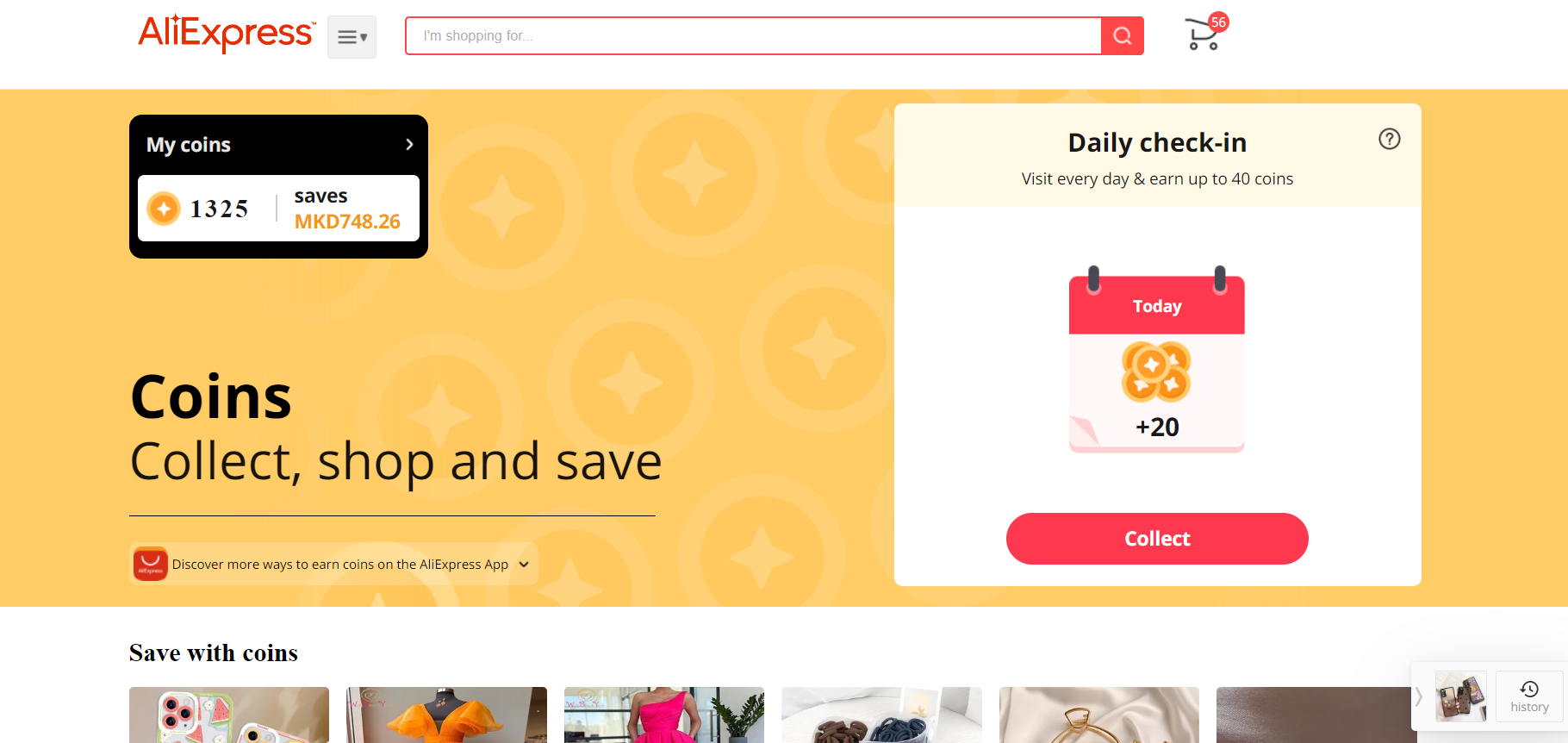
By implementing these strategies, you not only encourage repeat purchases but also create a sense of appreciation and value for your customers.
This helps you build a long-term relationships and driving overall business growth.
👉 Read about the 26 Mind-Blowing Shopify Hacks for E-commerce Growth.
Successful DTC Marketing Brands Examples
Zara DTC Marketing

Zara is a fashion brand that has mastered the art of direct-to-consumer (DTC) success. Hence, with a commitment to delivering premium, value-priced clothing for men, women, and youth, Zara has earned a special place in the hearts of fashion enthusiasts worldwide.
In fact, their Facebook following is nothing short of extraordinary, approaching an astounding 30 million likes!
Also, Zara’s journey is intricately tied to the Inditex family, a global powerhouse boasting 8 brands and an impressive network of nearly 7,500 stores during our assessment.
However, what sets Zara apart is its unwavering dedication to the DTC model and vertical integration. This unique approach propelled the brand to the forefront of the fast fashion movement, allowing them to swiftly bring new designs to market in as little as two weeks.
What’s achieved through their DTC Marketing strategy?
With its direct-to-consumer focus and seamless integration across the supply chain, Zara has become a beacon of inspiration for aspiring DTC fashion brands. It illustrates the incredible potential and long-term future that lies ahead for brands embracing this bold and innovative approach.
Plus, it has undoubtedly secured a special place in the hearts of consumers and industry insiders alike, capturing the essence of what it means to thrive in the world of direct-to-consumer fashion.
Moreover, with their finger on the pulse of trends and a commitment to delivering accessible style, Zara continues to shape the landscape and inspire a new generation of fashion-forward individuals.
So, let Zara be your guiding star as you navigate the exciting realm of direct-to-consumer fashion.
Tesla‘s DTC Marketing Example
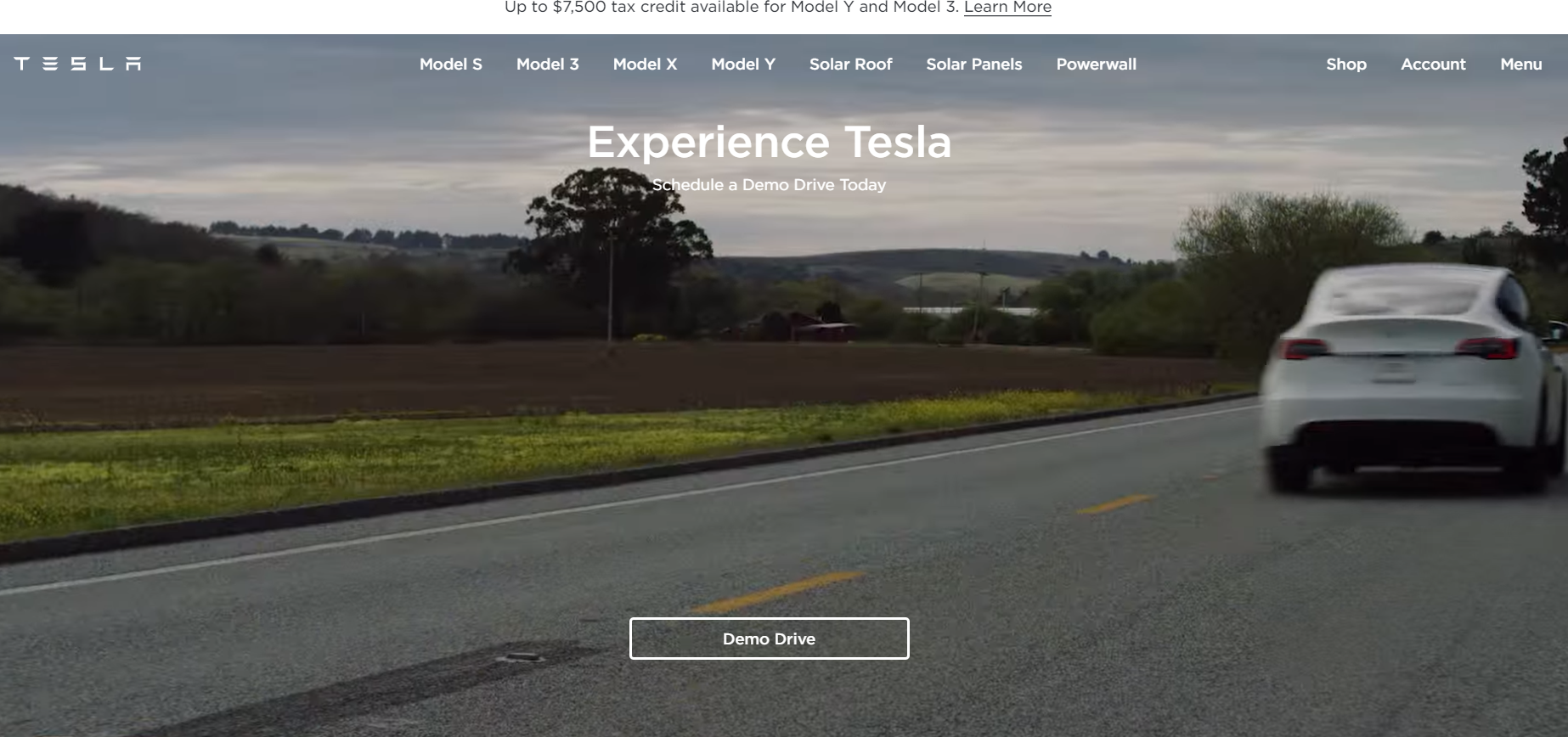
Does Tesla need an introduction? We bet not! It stands as a shining example of a company that has revolutionized an entire industry by challenging the established middleman structure of the auto industry. Tesla has paved its own path, creating a unique supply chain to fulfill its vision and, most importantly, fostering direct relationships with customers.
What’s achieved through their DTC Marketing strategy?
With unwavering determination, Tesla has taken on the traditional auto industry, disrupting it at every level. They have boldly reduced costs by removing or minimizing the influence of middlemen, ensuring that consumers receive affordable and top-quality electric vehicles.
Moreover, when it comes to delivering value to consumers, Tesla excels on multiple fronts. They offer superior product quality and competitive pricing.
While they initially started as a luxury brand with premium pricing, Tesla used those profits to fund the development of a broader range of exceptional electric vehicles, making them accessible and affordable to a larger audience.
Therefore, Tesla’s commitment to innovation, customer-centricity, and sustainability has positioned them as a trailblazer in the world of direct-to-consumer automotive brands.
Dollar Shave Club DTC Marketing Example
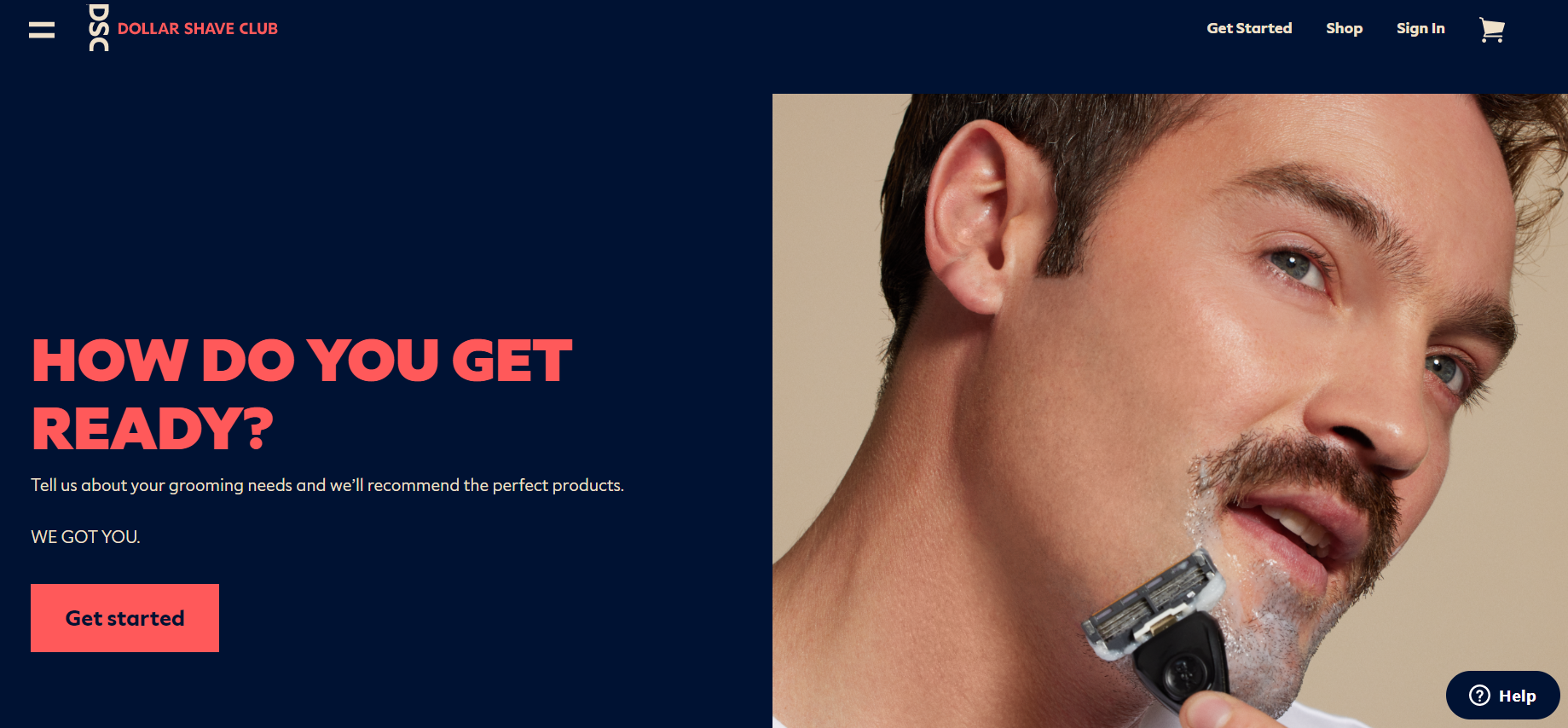
Dollar Shave Club stands out among many brands that sell directly to consumers. Hence, the CEO, Michael Dubin, decided to remove the middleman to save costs, and the outcome was a business worth billions of dollars.
Thus, it shows us how this type of model can be more efficient than buying from retail stores.
So, instead of going to the store and remembering to purchase new razor blades every time they run out, customers can simply sign up for a subscription and choose a schedule that suits them.
This way, the traditional retail vendor is bypassed. When customers understand how this system works, they realize that they’re paying more to the retailer for a less convenient experience.
In fact, by adopting direct-to-consumer marketing, Dollar Shave Club transformed into a billion-dollar business. Also, this success can be attributed to their compelling storytelling and unique offering.
Glossier‘s DTC Marketing Case Study

This is a brand that has gained a lot of attention because of its dedicated and passionate following, something that traditional brands have struggled to achieve. What sets Glossier apart? It could be their strong focus on attracting new customers.
Initially, Glossier began as a blog aimed at helping young people discover good quality beauty products. However, the owner, Emily Weiss, wasn’t satisfied with the existing options. Recognizing an opportunity, she decided to create her own high-quality products and shared them with her audience.
Today, Glossier is a direct-to-consumer cosmetics brand that offers skincare, makeup, fragrances, and more.
They primarily sell their products through their website, but you can sometimes find Glossier items at temporary shops and other physical locations.
What’s achieved through their DTC Marketing strategy?
Through engaging content and genuine conversations, Glossier quickly gained popularity on social media. They even involved their customers in product creation.
What’s more, to stand out in the competitive beauty industry, Glossier leveraged influencer marketing, allowing them to offer their products at lower prices compared to competitors. Their goal was to establish a personal connection with consumers through influencers and encourage word-of-mouth promotion. Additionally, Glossier employed a strong content marketing strategy to foster a community of enthusiastic followers.


Conclusion
To sum it all up, DTC marketing empowers dropshipping brands to forge direct connections with customers, create exceptional experiences, and achieve long-term success in an increasingly competitive market.
Plus, it offers dropshippers a powerful strategy to take control of the entire customer journey and drive conversion and retention goals.
Hence, by bypassing intermediaries and directly connecting with customers, DTC businesses can trim down costs, gain invaluable insights, and build stronger relationships.
By implementing proven DTC strategies, dropshipping brands can thrive and achieve their business goals. So, embrace DTC marketing and take your dropshipping business to new heights.













![The Top 21 3PL Companies Compared [2024 List & Guide]](https://images.weserv.nl/?url=https://prod-dropshipping-s3.s3.fr-par.scw.cloud/2024/03/Frame-3922469.jpg&w=420&q=90&output=webp)